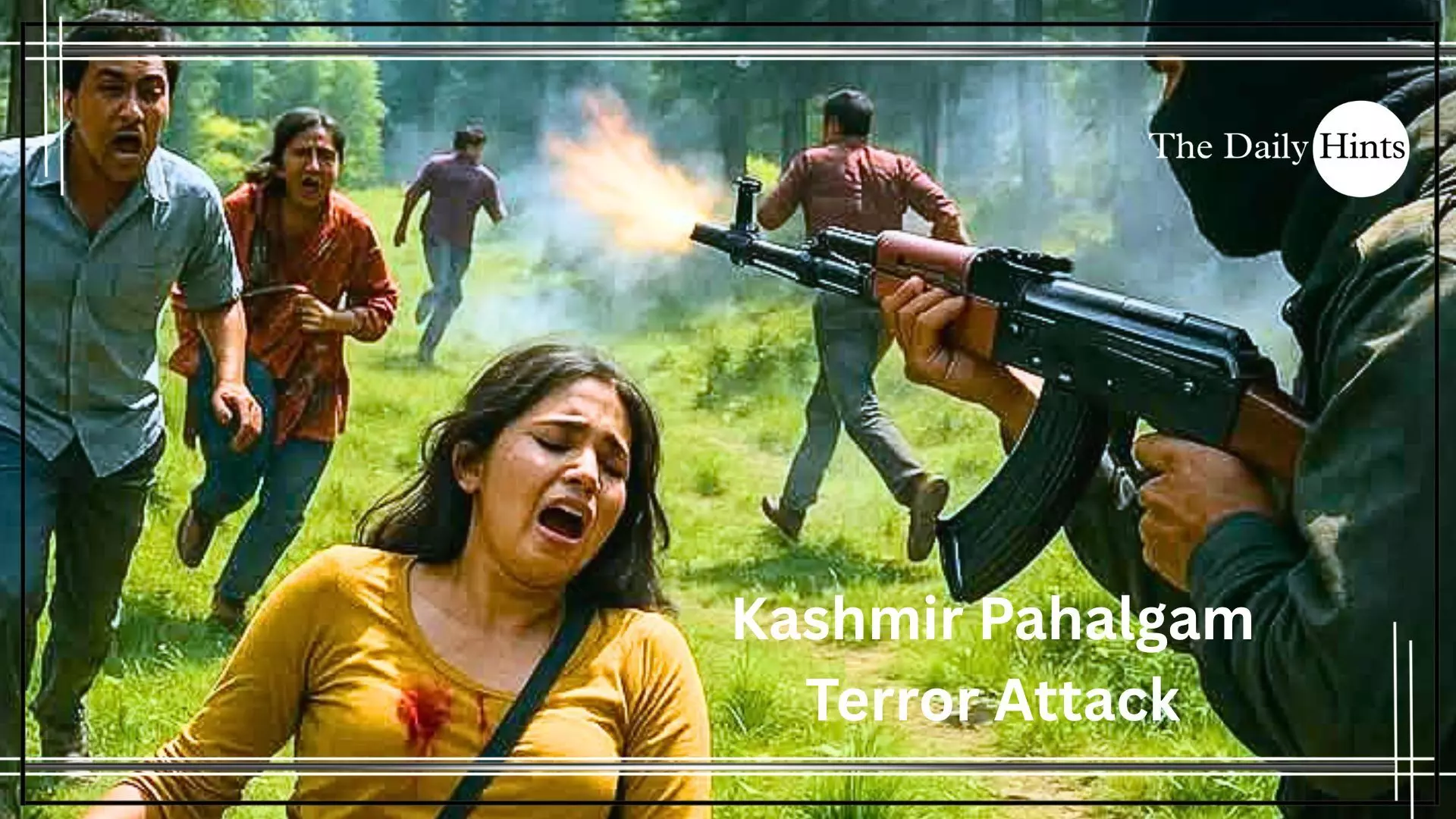Pahalgam Terror Attack: A Calculated Blow to Kashmir's Revival and India's Security Integrity

Images Credit - The Daily Hints
The recent terror attack in Pahalgam on April 22, 2025, was not merely a tragic event but a brutal and calculated attempt to sabotage the peace, economic growth, and national integrity of India. This barbaric assault, which led to the death of 28 innocent tourists and left 20 others severely injured, took place near the picturesque Pahalgam area of Anantnag district in Jammu and Kashmir. The terrorists, identified as members of Lashkar-e-Taiba, ambushed a bus ferrying tourists from Uttar Pradesh, Madhya Pradesh, and Delhi—specifically targeting civilians to inflict maximum psychological and economic damage. The bus, which had no official security cover and had lost contact with the control room due to poor coordination, became an easy prey despite the sensitive security climate of the valley.
This was not an isolated attack, nor was it one that could have been executed in a day. Such an incident requires deep planning, coordination, intelligence evasion, and a clear geopolitical motive. What becomes questionable in the wake of this heinous act is the role and preparedness of India’s security apparatus. With heightened military presence, strategic surveillance, and robust intelligence networks in place, the question arises: how did 6 armed militants carry out such a targeted operation in a high-security zone without early warnings being acted upon? Was the intelligence input missing or mishandled? These are not merely administrative loopholes but represent a gross systemic failure.
This failure is particularly glaring because it echoes past tragedies. Be it the 2016 Uri attack, the 2019 Pulwama bombing, or now Pahalgam 2025—all incidents share a common thread: a lapse in coordination between central intelligence agencies and local law enforcement. According to the Ministry of Home Affairs' data, over 420 terror-related incidents occurred in Jammu and Kashmir between 2019 and 2023, despite several policy shifts and crackdowns. While a reduction in overall numbers had been observed post-2020 due to increased security measures and revocation of Article 370, these occasional, brutal spikes show that militant networks still thrive with external support—predominantly from Pakistan.
This attack also came at a time when Kashmir was experiencing a significant economic and political revival. With over 5 lakh tourists visiting the region in the first three months of 2025 alone—according to the Jammu and Kashmir Tourism Department—tourism was on track to cross historic records. A Rs 3,500 crore infrastructure development plan for Pahalgam and surrounding regions had been rolled out to boost the valley’s economy, and more than 40% of local employment in the Anantnag region was directly or indirectly dependent on tourism. Post the attack, cancellations soared by 60% within 72 hours, effectively stalling the valley’s most crucial revenue engine.
Moreover, as per a report by the Ministry of Labour and Employment, the tourism boom was projected to generate over 6.06 lakh job opportunities in the valley by the end of 2026. The average income of local vendors, hoteliers, and transport operators was reported to have increased by 28% in 2023–24. This economic progress was not only lifting Kashmiri families out of hardship but also helping to detach them from extremist influences by integrating them into the national growth narrative. The Pahalgam incident, thus, is a direct strike on this progress—a strike that benefits only those who wish to keep Kashmir in perpetual turmoil.
Notably, the incident has raised serious concerns about the coordination between Jammu and Kashmir's local administration and central forces. On April 7, 2025, Union Home Minister Amit Shah visited Srinagar for a high-level security review meeting. Curiously, the Chief Minister of Jammu and Kashmir, Tehri Farooq, left the venue after a brief 20-minute discussion, citing a separate engagement, and did not participate in the full meeting. Was this a mere scheduling conflict or a sign of a deeper disconnect between the state and the Centre? If Kashmir is an integral part of India—as is constantly reiterated in Parliament—the elected representatives of the region must be involved in crucial national security discussions. Exclusion or lack of involvement sends the wrong message and undermines the spirit of cooperative federalism.
The timing of the attack also appears politically motivated. Historically, major terror incidents in the valley have coincided with high-profile foreign visits or domestic political milestones. The recent Pahalgam attack occurred just days after a U.S. congressional delegation’s visit to India. Similarly, the 1993 and 2000 attacks were timed with the visits of Ronald Reagan and Condoleezza Rice, respectively. The pattern is clear: terrorist organizations like Lashkar-e-Taiba are attempting to derail India's global diplomatic outreach by painting Kashmir as a zone of instability.
In the midst of this, the role of religious leaders and their narratives cannot be ignored. Some local clerics have been amplifying communal rhetoric instead of fostering unity. While the nation mourns, these voices fuel further discord by portraying the attack as a reaction rather than a premeditated assault. It is high time for religious leaders to act as pillars of peace rather than conduits of polarization.
What India needs now is not just retribution, but a comprehensive re-evaluation of its Kashmir policy. Surgical strikes, while symbolically significant, are short-term deterrents. A long-term strategy must include integrated intelligence operations, community engagement, economic investment with localized ownership, and stringent counter-radicalization programs. According to the National Investigation Agency (NIA), there are over 200 active foreign militants operating in the Kashmir Valley as of March 2025. Unless their networks are dismantled internally and externally, peace will remain a fragile illusion.
The government must also introspect: what have we really learned from Pulwama, Uri, and now Pahalgam? Each of these attacks exposed gaps in our defense architecture, yet no parliamentary panel has produced a publicly available white paper on reforms undertaken. Parliament has repeatedly echoed the idea of "Greater Kashmir," inclusive of Pakistan-occupied territories, but ensuring the safety and economic well-being of our existing regions should be the immediate priority.
In conclusion, the Pahalgam attack is a wake-up call for India—not only about Pakistan’s persistent cross-border terror policies but also about our own administrative inefficiencies and intelligence lapses. It is a test of our resolve to not let terrorism dictate the future of an entire region. The government’s response must be swift, decisive, and strategic—not just in the form of military retaliation but in safeguarding the lives and aspirations of ordinary Kashmiris who are striving to build a better tomorrow.
